The first three Royal Air Force personnel have arrived in Australia for training on the RAAF’s E-7 Wedgetail aircraft.
According to the Australian Defence Magazine, three RAF crewmembers, comprising a pilot, an Electronic Support Measures Operator (ESMO), and a Surveillance and Control Officer began their Wedgetail conversion course with 2 Sqn at Williamtown about three weeks ago.
“Number 2 Squadron has just taken on-board some trainees, both from the UK and the US – both pilots and back end mission crew,” 2 Sqn Senior Engineer Officer (SENGO) Squadron Leader Shane Taylor said at RAAF Base Tindal last week. “They will be progressing through the training continuum over the coming twelve to eighteen months and certainly other countries are expressing an interest in this capability.”
They say that the news follows the recent demonstration of the Wedgetail’s capability at RAF Waddington, home of the RAF’s Sentry fleet. One aircraft attended the Royal International Air Tattoo at RAF Fairford in July and deployed to Waddington after the show to demonstrate its capabilities to the UK’s Sentry force.
The E-7A Wedgetail provides one of the most advanced air battlespace management capabilities in the world and the Royal Air Force are rumoured to be interested in it to replace their E-3D Sentry aircraft. The aircraft is an Airborne Early Warning & Control aircraft with maritime search capabilities, it has the ability to control unmanned aircraft and it has intelligence gathering capabilities.
We recently reported that options for the future delivery of the UK’s Airborne Warning and Control capability are being explored, with the focus now on replacing the E-3D Sentry fleet.
We understand that upgrades however are reportedly considered to be expensive. According to Janes here, maintenance is becoming increasingly costly and replacing them instead might be the most cost-effective option.
Some industry commentators are also arguing for a new aircraft type altogether. The large sums of money allocated to upgrading the E-3D fleet should be used to purchase a more advanced off-the-shelf aircraft, a defence analyst has argued. Justin Bronk, Research Fellow, Airpower and Technology, outlines options for replacing the E-3 fleet in his paper ‘The Future of Air C2 and AEW: E-3 Sentry, Threat Technologies and Future Replacement Options’:
“The RAF’s E-3Ds need a £2-billion CSP both to bring them to rough parity with current US and French standards by the mid-2020s and to stretch the fleet out to 2035 in the process. However, the E-3, even in modernised form, is no longer a cutting-edge ABM&S system in a world where proliferating long-range missile systems and emerging non-Western low-observable fighters can force it to stay hundreds of kilometres from contested airspace, placing a higher premium on BLOS communications capacity rather than onboard sensors.
Even when it is able to operate closer to the battlespace, the AN/APY-1/2 mechanically scanned radar array common to all E-3s has significant inherent limitations in terms of its ability to detect low-observable, very slow moving and hypersonic threats, unlike more modern AESA-equipped AWACS types already in service with the US Navy and various air forces around the world. An AESA-equipped ABM&S platform with improved communications node capabilities, based on a commercial-derivative airframe, seems a logical alternative option which could provide the RAF with a more capable and efficient alternative to extending the life of the E-3D over the next 20 years.”
Both the Sentry and Wedgetail are designed to monitor airspace to provide threat detection of adversary aircraft and situational awareness on friendly assets.
The E-7A Wedgetail is based on a Boeing 737-700, with the addition of an advanced Multi-Role Electronically Scanned Array (MESA) radar and 10 mission crew console. They can cover four million square kilometres during a single 10 hour mission according to the Royal Australian Air Force.
“The E-7A Wedgetail represents an entirely new capability for the Australian Defence Force, providing an airborne early warning and control (AEW&C) platform that can gather information from a wide variety of sources, analyse it and distribute it to other air and surface assets.
The E-7A Wedgetail can control the tactical battle space, providing direction for fighter aircraft, surface combatants and land based elements, as well as supporting aircraft such as tankers and intelligence platforms. Based on the 737-700 commercial airliner airframe, the E-7A Wedgetail features advanced multi role electronically scanned radar and 10 state-of-the-art mission crew consoles that are able to track airborne and maritime targets simultaneously.”
As the Second Line of Defense put it, the Wedgetail is designed with ‘the reach rather than range approach’; the MESA radar can be dialled up in terms of energy and focused in terms of direction on priority scan areas. As one Northrop Grumman engineer reportedly put it:
“There is a fundamental shift operationally in terms of how one uses the Wedgetail versus the AWACS. You no longer are limited or defined by a 360 degree rotator. You are able to configure how much power you want to put into your radar reach; it is configurable to the mission. The integrated IFF and radar functionality also allows the system to reach much greater than other systems into the battlespace to shape greater situational awareness in the battlespace. You can put the energy in the mission area where you have the highest priority.”
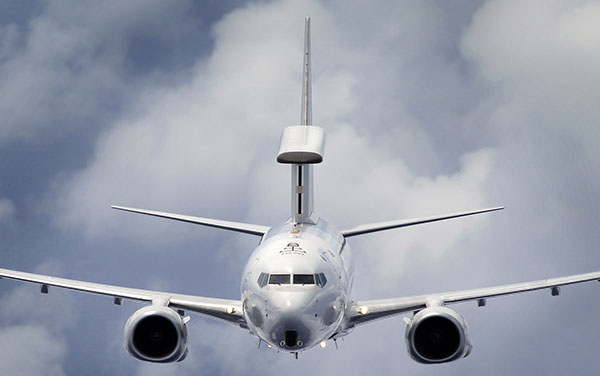
The L-band electronically scanned AEW and surveillance radar is located on a dorsal fin on top of the fuselage, dubbed the “top hat”, and is designed for minimal aerodynamic effect.
The system provides 360 degree coverage and is capable of simultaneous air and sea search, fighter control and area search, with a maximum range of over 600km (look-up mode). When operating in look-down mode against fighter-sized target, the maximum range is in excess of 370 km according to Boeing. When used against maritime targets, the maximum range is over 240km for frigate-sized targets. MESA is capable of simultaneously tracking 180 targets and conducting 24 intercepts. Back in 2009, Boeing even demonstrated control of three ScanEagle unmanned aircraft from a Wedgetail.
In addition, the radar antenna array is also doubled as an ELINT (that’s a form of covert intelligence-gathering by electronic means) array, with a maximum range of over 850 km at 9,000 metre altitude.
Wedgetail looks to be maturing nicely in Australian hands with the major early teething troubles now ironed out. It’s also currently undergoing a major programme of further upgrades, due to be completed in 2022 that we reported on here.
Back in 2014, a Wedgetail conducted the first Australian sortie over Iraq supporting coalition forces conducting airstrikes against Islamic State. The next year, another performed the longest Australian command and control mission in a war zone during a 17-hour, 6-minute combat mission, requiring two air-to-air refuellings to stay aloft.
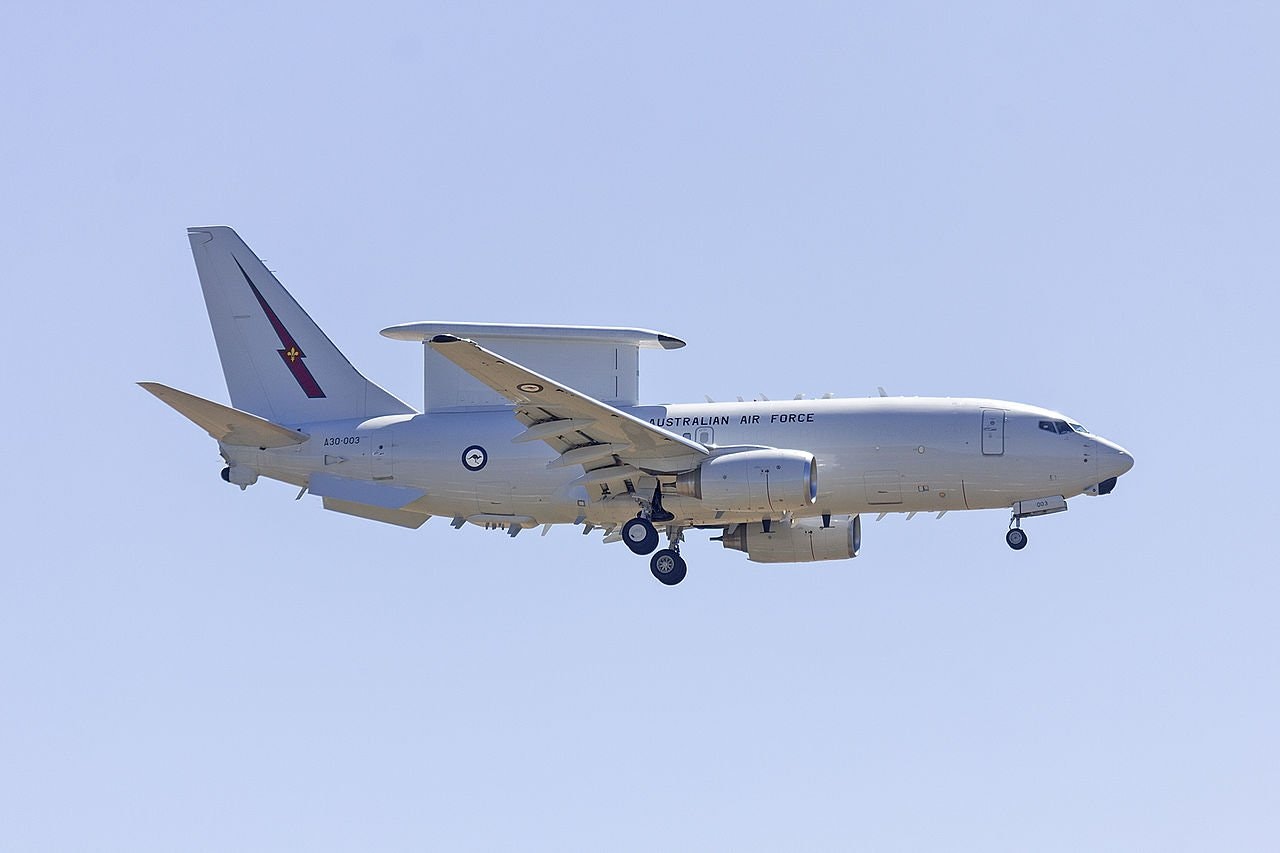
Wedgetail, in my opinion, is the only real contender short of a bespoke (and no doubt therefore expensive) platform developed for the UK.



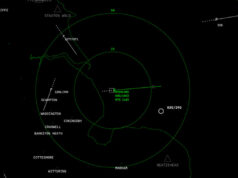
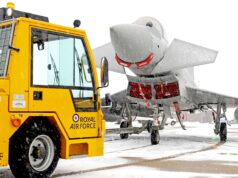
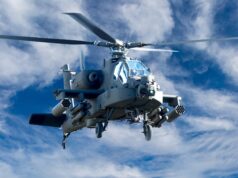
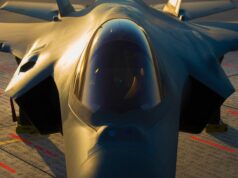


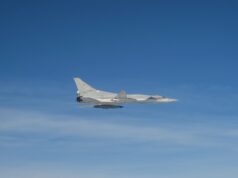
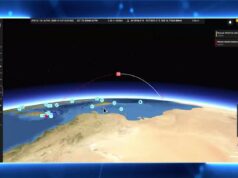
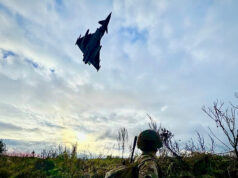

No budget for it. So RAF will have to give up or not do something else I’m afraid. But great news if it happens. Guess we’ll only afford no more than five and procured over many years.
There is a specific budget for the E3 upgrade, and it is rather large. Should easily buy at least 4 E7s.
Sensible move, it makes little sense spending £2 billion on our E-3D. Buy E-7A and then sell the Sentry Airframes back to the US so they can be placed in the boneyard and parted out for their own E-3 fleet.
A couple of points:
1) E-7A doesn’t have that much commonality with the P-8, even the fuselage skin thickness is different (there is some nevertheless so shouldn’t be discounted)
2) The E-767 is basically the guts of a E-3 in a 767 airframe
Am I correct in understanding that the P-8 has the thicker skin? If that is true, then it makes one wonder if an “EP-8” platform can be ordered. Essentially the P-8 airframe with the E-7 AEWS equipment so that a degree of commonality can be maintained.
Of course, we could also learn from the RAAF as they operate both the E-7 and P-8. They should be able to provide some background in the maintenance of these two types.
Another note, the AN/APY-1/2 fitted to the E-3 is not a Mechanically scanned radar as this article incorrectly states it is a Passive Electronically Scanned Array PESA.
Boeing 737 airframe has come a long way since its first flight in 60s.
Over 10000 B737 built or on order, the E7 looks to be the obvious replacement for Sentry.
As I understand it the current Sentry fleet will require a substantial and expensive upgrade so surely better to buy new aircraft that will cheap to maintain.
From the article…
“Wedgetail, in my opinion, is the only real contender short of a bespoke (and no doubt therefore expensive) platform developed for the UK.”
A bespoke platform? We’ve gone down that route before, or at least part way down that route given we never really got to the end, and still have the multi-billion-pound scars to show for it. With the sensitivities arising from that fairly recent Nimrod venture I can’t imagine that going bespoke is any sort of real contender especially as budgets get ever tighter, something that I would think leads fairly naturally to a very strong desire to minimise risk wherever possible.
I can’t say that I know much about this stuff but from reading the comments here from various people who seem to Wedgetail does look like a very promising option and certainly a better one than spending £2bn on bringing the existing E-3Ds up to date.
The problem is previously the MoD has in the past not been capable of drafting a contract that pushes risk onto the contractor. So the contractor has commercial gain and little risk, even worst the contractor has more to gain by pushing for changes.
If the UK ever goes down the development route again it must focus on creating a product, like the Typhoon or T31 frigate. Ultimately if there is tangible UK economical benefits why should the defence budget shoulder the development cost? Its basically a long term strategic investment in UK Plc. Companies would call this the RnD budget and something you need to do to survive.
http://www.defense-aerospace.com/dae/articles/reports/Typhoon_studyJune2006.pdf
I agree re risk allocation & doing R&D. In fact I very, very strongly agree with UK Plc investing in R&D to become an innovation economy (well, maintain and increase momentum since the UK is already a source of much innovation). It’s just that we have so many projects that we could and should be getting involved in or already are involved in (e.g. T31, Tempest, MCM mothership (maybe also adaptable as a general purpose C3/super-OPV), VTOL small, medium and heavy drones, Sampson successor, SPEAR 5, Skylon … the list goes on) that I think this E-3D replacement where Wedgetail is already an existing credible option on the market is a case where we should save our R&D resources to invest in some or all of those other projects that potentially could yield better returns in terms of export sales and for use by our own military (medium sized VTOL drones being one of my hobby horses right now).
Good system, I think it would fit the RAF’s requirements very nicely with the added bonus of being able to augment the incoming P8s.
Cheers!
Very welcome news, looks like some common sense is being employed!
A fleet of 6 should meet our needs, stock Aussie spec, no expense changes needed!
Seen a few articles mention the ability to control UAVs from the E-7. I think they have got the wrong impression there – no UAV is actually controlled/driven from it. They are just given a ‘mission control’ service, just like any other military aircraft would receive from any C2 agency/platform.
Given the low numbers of personell involved, could it be more be a exchange program/seedcorn-styled initiative? I dont think things will move as quickly as that hopeful article alludes.
This may be a daft question, but if we are already buying the P-8, why don’t we just take the radar and electronics kit from the Wedgetail and mount it on the same airframe that is used for the P-8, for greater commonality?
Nimrod was a bad idea from the start trying to modify airframes that were produced with old methods the airframe was never really an adaptable design. This doesn’t mean that we should let it dictate away from a new British design – wedgetail may look good now but will it still be effective in 30 years? To me the number of targets and range quoted isn’t exactly a massive leap?
Using an air frame such as an a330 as a blank canvas could lead to something extremely effective. Remember we do have some of the best radar designers in the uk and have some of the best technology in operation.
I wouldn’t be unhappy with wedgetail but I don’t think we should just go with it because it is there, the RAF has always sought cutting edge technology. Obviously a trade off of cost/capability of keeping E3 as is putting up with a capability gap or “investing” a large sum in a short term upgrade e7a maybe the easiest answer doesn’t mean it is the best or the correct one if it was that good why has the USAF not just adopted it? It is an American plane creating American Jobs? Surely they must have spent a significant sum in E3 why didn’t they jump to e7?
The E7 Wedgetail’s Multi-Role Electronically Scanned Radar is a major step change improvement over the E3’s AN/APY2. It uses a longer wavelength L-band (1 to 2 Ghz) rather than the E3’s E/F band (2 to 4 GHz) but has better target resolution and signal processing so it can detect small stealthy targets better, such as cruise missiles. The E3’s PESA radar is very powerful and kicks out RF in the Mega Watts but over a broader view, think of a maglight on widish focus. The E7’s because its an AESA radar can narrow down the focus and put that Mega Watt of power into a very narrow beam much like a search light. By doing this a lot of energy can be put on to the target and thus have a better chance of a return (induced reflection) especially on small stealthy targets. Also the AESA is capable of random sweep patterns whilst keeping an area focused thus being able to search and track at the same time.
Sending RAF crews to carryout training with the RAAF will be very beneficial to the E3’s eventual replacement. This crew would have had experience of operating on the E3 thus making it very easy to compare the two, with a substantial report to follow. There will be some additional features required fitting to a UK E7 such as radios etc to make them compatible with our Army and Navy.
it would be interesting to know the real pros and cons of each systems is why the US hasn’t gone down this route with their much bigger budget.
What interest me is the spot light idea. Anyone that has watched any movies involving prison breaks know that beams are easily avoided and more importantly are only effective if you know where to focus the beam, which as an early warning platform, you clearly won’t, especially in the case of more stealthy jets where there radar cross section is smaller and so harder to pin point at range.
I could see a combo of the two being very powerful, one probably wide area but less accurate coverage and the second the more focused threat tracking.
Hi Steve, in some respects the US has gone down this route with the Navy’s E2D Advanced Hawkeye which uses the APY-9 AESA radar in much the same way as the T45s Sampson i.e. rather than use a number of fixed panel antenna it rotates a pair of antenna inside the radome. It’s interesting to note that Japan decided to buy the E2D rather than the Wedgetail.
Don’t get hung up with the spotlight function of the radar. This is because rather than a PESA radar which only transmits one centre frequency at a time, the AESA can be multi frequency. This has the added advantage of spoofing jamming but also increasing the complexity of designing stealth into an aircraft or missile as it must try to lower the RCS across a wider frequency spectrum.
The AESA such as the E7’s is a true digital radar so can use a multitude of sweep patterns and not conform to a linear pattern sequence. Also if carrying out a wide area search and a suspect target is detected this area can be highlighted whilst still maintaining the search sweep i.e. by transmitting more RF energy in that area of interest. It could also transmit a wide-band transmission i.e. the full 1 to 2 GHz which makes it doubly hard for radar detectors. You must also remember like the Sampson the beam/beams sweep rate is incredibly fast once every three seconds. So a near real time picture of the sky/surface can be displayed unlike the AN/APY2’s.
I think for the UK’s needs the E7 is the best choice currently available irrespective of the airframe commonality with the P8. It has the best combination of loiter time, radar range and discrimination as well as a largish airframe for future growth.
Kind of sad, but seems like a sensible idea.
We have had nearly 30 years out of the Sentry, The US is confused what to do about all its ISTAR platforms, They always seem to think there is something just around the corner that will mean large platforms are no longer required but they never seem to be able to get these platforms working. US vs Global Hawk is a perfect example, Now JSTARS replacement program and no doubt soon AWACS. Keeping 707’s in the air in the 2040’s is just a bad idea.
Better to move to E7 now.
Seems like the RAF should definetly not spend £2 billion upgrading the E3 sentry. A move to the Wedgetail now makes a lot of sense. £2 billion should purchase 4 possibly 5 aircraft which is a start and certainly enough to retire the E3 for now. A further order for 3-4 more E7s would be needed later but I would stress the need for more Poseidon MPAs first.
Get the E7now whilst the RAF has an allocated £2 billion budget and scrap the Sentry.
The RAF has to acknowledge the realities we cannot afford more than £2 billion for AWACs right now. If we had more money pumped into defence it has to go to purchasing more F35Bs. More frigates, submarines and an anti ship missile fit for the Royal Navy is desperately needed. After that more Apache Es and Poseidon MPA would be on my shopping list.
We cannot afford to lose an AWACS capability.
We either upgrade Sentry or procure an alternative.
For me this is a top priority project.
Agreed Mike, it’s a top priority. The E7 is still evolving, but it has now reached maturity and we can benefit from others paying the enormous development costs!
I would regard 6 as the minimum number.
Regards numbers, I think 5 or 6 should be adequate.
Agree Mike the RAF should get the green light to purchase as many E7s as they can afford with the £2 billion budget allocated for the E3 upgrade. How much life does the E3 airframe have left in them. Could we strip them out and use them for something else, like an MPA equipment fit?
The RAF E3Ds are the main air defence system of the UK. The ground based radar are all very good but by their physical locations they can only see out to a fixed horizon whereas the E3s fly at 40,000ft thereby giving that crucial early warning to our QRA aircraft.
In a peer vs peer war they along with the satellites would be the primary targets for day 1. Therefor its imperative that we have the best system available to protect our country, especially as we don’t have a land based SAM system so must rely on the Typhoons for defence.
I think what this is is an Aircrew exchange with the RAAF. No different to RAF crews doing aircrew exchange with our other allies, and vice-versa. So although its the best way to evaluate a new system,lets get too excited and wait and see.
I think what this is is an Aircrew exchange with the RAAF. No different to RAF crews doing aircrew exchange with our other allies, and vice-versa. So although its the best way to evaluate a new system,lets not get too excited and wait and see.
Just a thought, but if the UK is already buying the P-8, why can’t we buy the radar and internal systems of the Wedgetail, but mount them on the same airframe used for the P-8, for greater commonality?
my guess this is timed to align with the mini sdsr. i am expecting heavy cuts during it but at the same time announcement of future purchases to smooth the blow.
i am also thinking trump flying in an osprey over London was done to finalise the deal to purchase some.
would be a huge boost to get osprey. who or what is facing the chop though for all this because that’s how we roll these days, sadly.
sacking off the older vehicle fleet in Canada would save millions for a start. each ex at BATUS requires an eyewatering amount spent on spares being flown in for the infantry operated vehicles. in fact it’s been 3 years since i was there so they may have gone already…
That’s how they work. A few Carrots to take headlines while elsewhere the foundations are removed.
Example. 1995 Front Line First. Meteor purchase announced along with Apache Hellfire TLAM and the future was all stand off. We are STILL waiting for Meteor 23 years later and, as mentioned on the other thread on cannons, crying out for CAS.
The other stunt they pulled then was actually cutting the front line while highlighting frontline first. Head office. Officer numbers. Support posts all went.
It is all SPIN. And needs knowledgeable journalists to call it out for what it is. Sadly they seem non existent.
Like the chap on the recent interview with Nick Carter on A2020 Refine. Absolute joke and did not hold him over the coals at all.
Daniele wrote:
It is all SPIN. And needs knowledgeable journalists to call it out for what it is. Sadly they seem non existent.
So , young Sapper farouk pilots his CSB across to one of the requisitioned boats in the Falklands carrying a BBC reporter for him to send his report back to London using the marisat system. A harrier has just gone down and as i cabby him across the water he shouts at me:
“How many engines has a Harrier got?”
I’m young , naive and in awe of a BBC reporter and I reply:”One”. Gee how I wish I had said Two. That tells me all I need to know about the quality of BBC miltary correspondents. My meeting with Katie Aide in Bosnia a few years later was simply the icing on the cake.
And the Kate Aide story? Are you able to tell?
Just a thought, but as the UK is buying the P-8 already, why don’t we do a deal whereby we can take the radar and internals of the Wedgetail, and fit it all onto the same type of airframe used for the P-8, to give greater commonality?
http://www.ausairpower.net/APA-Wedgetail-Antennas.html
If you want to get a good deal then at least a basic, cheap competition is needed.
I agree that the Boeing E-7 Wedgetail should be one contender for RAF AEW.
The other should be the Saab/Bombardier GlobalEye. This at least has some British made content. Also some overlap with the Globalexpress based Sentinel.
I would hope that 32 sqn eventually gets 2/3 Global 5500 and/or 6500. I would base RAF proposed GlobalEye on the new G6500, not the old G6000.
In theory yes, but competition in this case involves politicians and MOD staff, which will no doubt get huge backhanders or at least massive corporate entertainment and offers for senior roles at the firms when they retire, resulting in less than optimal purchase price. On top of that there will be endless committees discussing the finer points and MPs arguing about loss / gain of jobs in their region resulting in massive delays in the process. Public tenders rarely work as they should.
Yes a competition could take a decade & cost hundreds of millions, or you have a small competent team who look at both alternatives, do the haggle & report quickly on their findings. You then have senior officials & ministers who trust the team & sign off quickly (OK, hard to believe now, but we did it in the 1960s with Polaris).
If we buy Wedgetail, we should negotiate some industrial offset, that matches the UK work we would have got with GlobalEye.
How much of the Wedgetail will be built in the U.K.?
I am getting a bit fed up of spending money and not getting anything in return for the superb workforce we ki the defence industry. Will it have RR engines? Will the electronics be from the U.K.?
There are plenty of Airbus A320/321 available. With Monarch Airlines fleet available. There’s no reason go the American route again. I dispair we don’t have the vision to do things ourselves.
That should be “we have in the defence industry”
No! don’t give the politicians the idea of changing the engines to RR. It will cost us a fortune and put its entry into service back five years.
The Wedgetail EW Self Protection system is a UK product similar to that fitted to Air Corps Apaches.
Of course there would be additional costs, because this would be yet another platform incapable of being refuelled from the RAF’s own tanker fleet. If this is being looked at, combined with the P-8, C-17 and RC-135 then surely now is the time to have meaningful discussions about fitting booms to the Voyager fleet, even if it is only to the KC2s.
Etihad are selling their 5 near new Airbus A330-200 Freighters. I would rather buy those outright & fit them with booms, than pay through the nose to Airtanker.
Whether operated directly or by someone via a contract (and, restrictive terms of use aside, it seems to be working), the RAF needs the flexibility of being able to refuel all of the aircraft types it operates without having to rely on others.
Could the RAF look at a “Voyager” conversion to fit the E3 replacement as well as other roles as the need arises, RC135’s are being phased out by the US why not look to the A330 as a “jack of all trades” aircraft, surely with one aircraft type fulfilling multiple roles within the RAF, expenditure on training, maintenance and associated costs would be lower